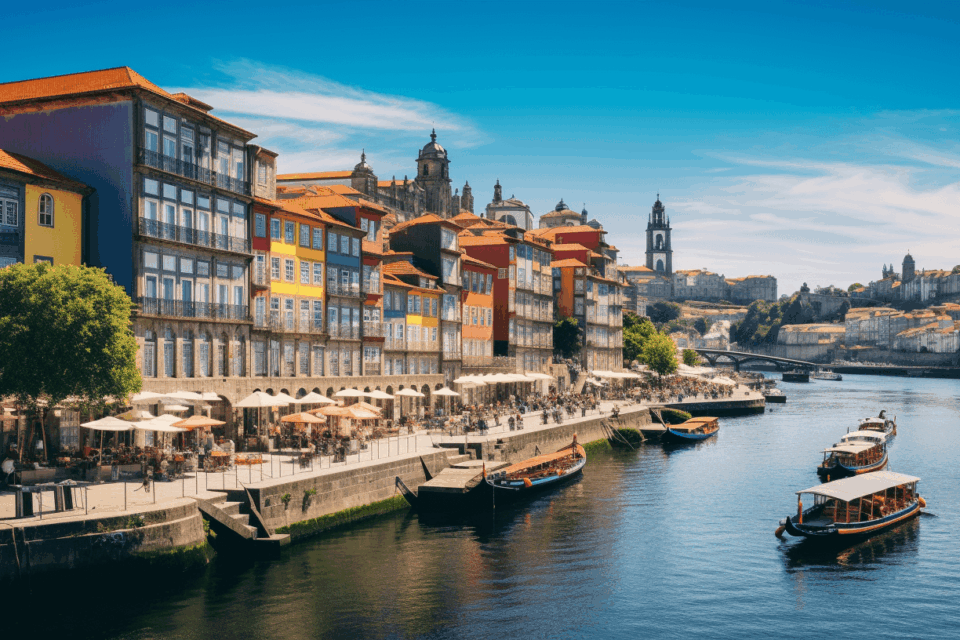Porto History: Discover Stunning, Must-See Heritage Sites
Porto history is a mesmerizing narrative woven with tales of exploration, architecture, and culture. As the second-largest city in Portugal, Porto offers an array of historically rich sites that beckon travelers to explore a past that has shaped its vibrant present. This city along the Douro River is a hub of heritage, offering something extraordinary for every history enthusiast. Let’s delve into the must-see historical sites that contribute to Porto’s cultural legacy.
The Charm of Porto’s Historical Core
Begin your journey in Ribeira, Porto’s old town, a UNESCO World Heritage Site renowned for its colorful, picturesque streets and riverside ambiance. The district bustles with life, offering cafes and restaurants eager to serve traditional Portuguese fare. Wander through narrow alleyways, and let the medieval aura engulf you.
The UNESCO World Heritage website provides insights into why this area was preserved, emphasizing the significance of its architectural landscape.
Explore the Majestic Livraria Lello
Considered one of the most beautiful bookstores globally, Livraria Lello is not just for book lovers but also architecture enthusiasts. This neo-Gothic structure, dating back to 1906, offers a majestic staircase and stained glass ceilings.
Online reviews celebrate its design, often lauding it as a must-visit spot in Porto. It’s advised to purchase tickets online to avoid long queues, especially during peak tourist seasons. The bookstore’s official website offers ticketing options and historical insights.
Dive Into the Rich History of Porto’s Churches
Sé do Porto (Porto Cathedral) is a Roman Catholic gem that stands proudly on the city’s highest point. With origins tracing back to the 12th century, the cathedral showcases Romanesque designs with later baroque and gothic influences. As you explore, note the exquisite rose window and the silver altarpiece within.
Another architectural marvel is the Church of São Francisco, known for its opulent gold-plated interior. This Gothic church, though humble from the outside, dazzles inside with Baroque grandeur. The mesmerized silence of visitors inside attests to its grandeur and historical significance.
The Impressive Palácio da Bolsa
Visit Palácio da Bolsa, the Stock Exchange Palace, a neoclassical wonder built in the 19th century. One highlight of this building is the Arabian Hall, inspired by the Alhambra in Spain. Guided tours are recommended to fully appreciate its history and architectural nuances.
The Palace celebrates Porto’s mercantile past and current cultural engagements. Scheduling a tour via their official website is advisable to ensure you capture the full essence of this historical masterpiece.
Discover Porto’s Connection to Wine
Porto’s history is intertwined with the legacy of port wine. Visit the wine cellars in Vila Nova de Gaia, located across the Douro River. These cellars tell the story of the wine trade and the city’s role in the global wine market. Renowned for their tastings and tours, places like the Sandeman and Taylor’s cellars combine wine appreciation with historical knowledge.
Be sure to check recent reviews or their websites for any seasonal promotions or event information.
Unveil Secrets in the Clérigos Tower
Torre dos Clérigos is a baroque bell tower offering panoramic views of Porto. This landmark, constructed by architect Nicolau Nasoni in the 18th century, is an enduring symbol of the city. Climbing its 225 steps is rewarded with breathtaking views of Porto’s sprawling urban landscape.
Reviews from tourists frequently mention the tower as a highlight, praised for the views and the sense of historical connection experienced at its summit.
The Influence of Portuguese Tile Art
Porto is a visual delight in part due to its extensive use of azulejos, or Portuguese tiles, that adorn many walls and buildings. São Bento Railway Station is a significant place to admire these artworks. The station’s entrance hall features over 20,000 azulejos depicting historical scenes, embodying the blend of art and history that Porto is known for.
Embrace Porto’s Underrated Treasures
While the major sites offer an unparalleled look at Porto’s past, the city’s hidden gems can equally captivate. Consider exploring lesser-known corners, such as the Foz do Douro, which provides a calmer, seaside aspect of the city infused with historic elements.
Casa do Infante, another understated site, tells the tale of Prince Henry the Navigator’s birthplace while serving as a compelling historical museum.
Staying Informed and Inspired
To fully appreciate the depth of Porto’s rich history and culture, staying informed and flexible with your itinerary is essential. Regularly check sites like TripAdvisor or GetYourGuide for up-to-date visitor reviews and tips on timing and transportation.
Conclusion: A City of Timeless Splendor
Porto’s history is not just learned; it is experienced. Every corner, façade, and cobblestone whispers tales of its rich past. Embracing these must-see heritage sites provides a timeless journey through culture and storytelling. Whether it’s your first visit or a return expedition, the echoes of history in Porto continue to captivate with their profound beauty and significance.



